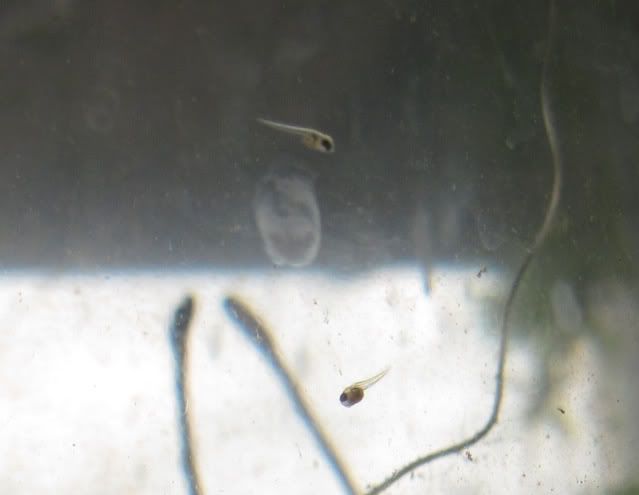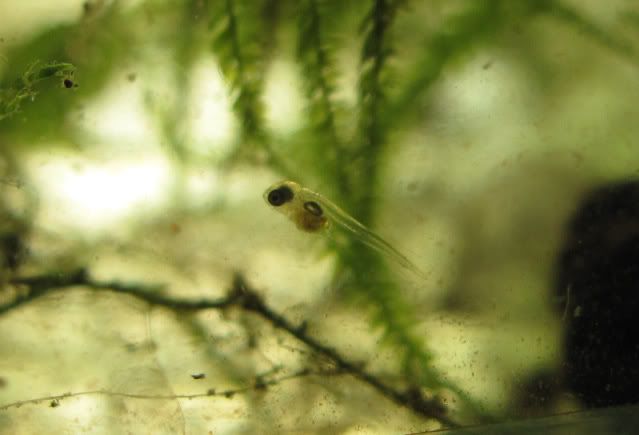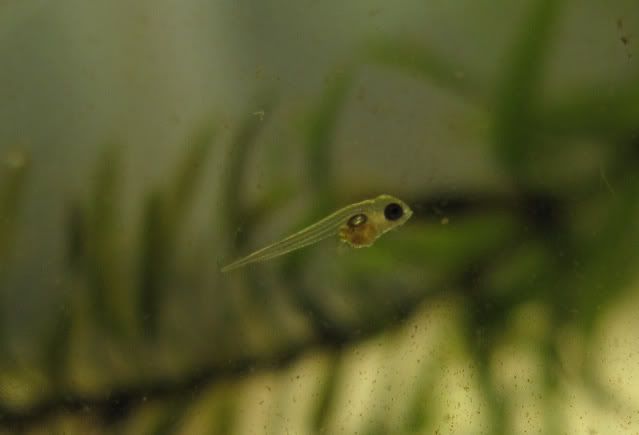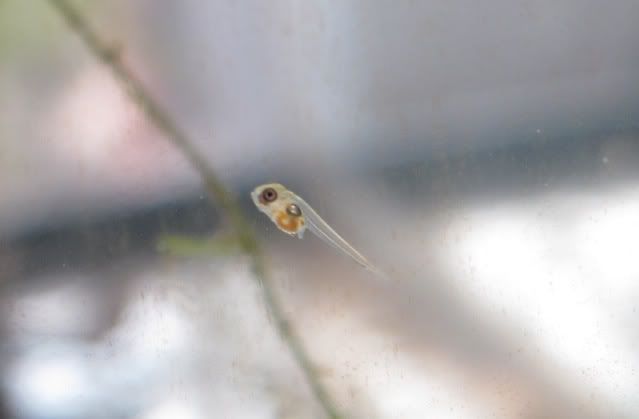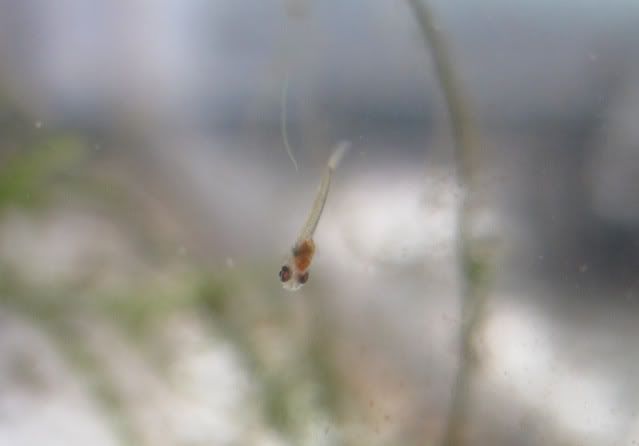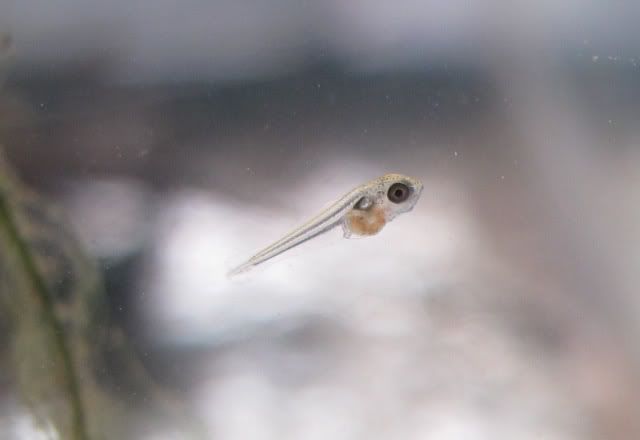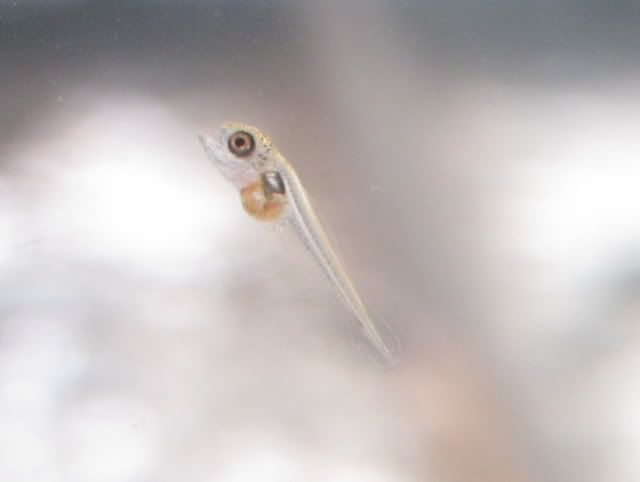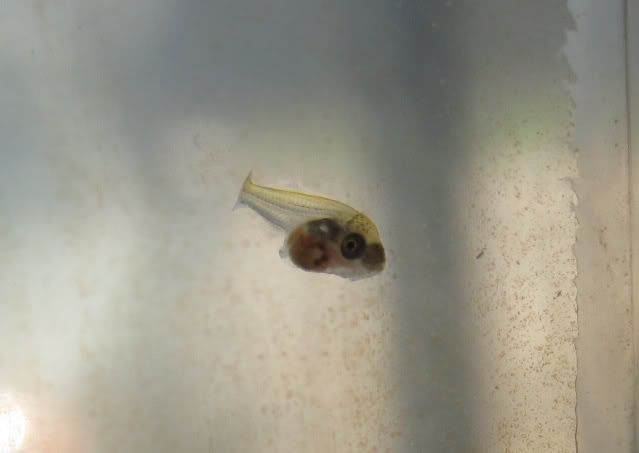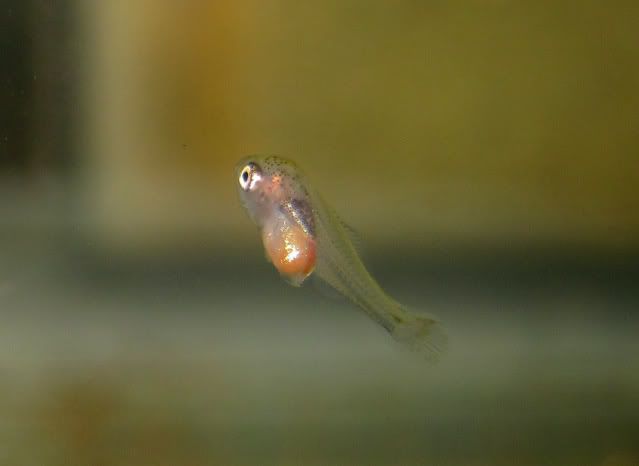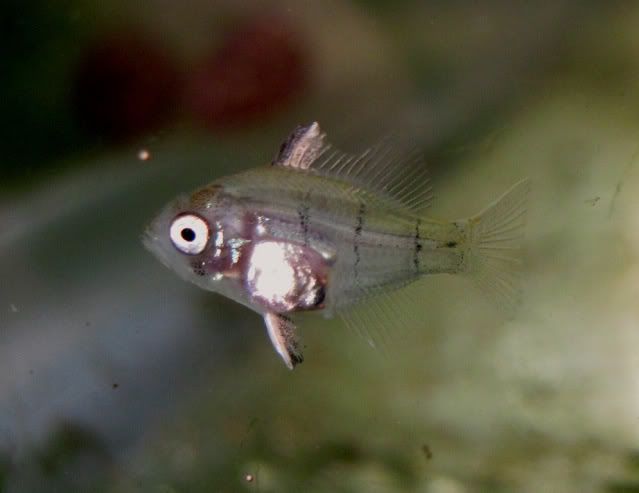Home late and beat but not sleepy, I was up photographing rocks at 2:30 AM when movement in the black banded tank caught my eye. The small fat one, the one I believe is my only female, was chasing something much faster that the daphnia and cyclops that lurk in the tank. The bigger male has been digging major pits in the sand while the smaller male doesn't dig but is persistently faithful to one little nook behind the driftwood. I did notice when the female looked depleted but searching the heavily planted tank as gently as possible, I never saw eggs or slivers. The 3 adults went almost wild when breeding started and I have to hide to even view them. It's been tough to know what was happening but I didn't expect swimups yet.
Closer examination revealed slivers already swum up and dispersed. I was up till four netting then back at it at 7:00.
Set up in bare 2.5 gallon, all the micro-verts I could muster added. Gonna need lots n lots more. Got at least 20 of various size and robust-ness. I'm sure more still in the tank where they have lots of cover but feed may not be adequate.
Tank is 15 gal heavily planted, air driven corner box filter, in a northern window with influence from west facing windows, tank light often left on till I go to bed ~ 11:00PM. Temp this morning was 68 F, last pH was 6.8 a week ago, has been as high as 7.2 depending on time of day.
Adults get frozen brine and blood worms and wide variety of wild collected critters.
Forgive me the gratuitous digital enlargment, I have macro-envy.



This guy is stalking and eating little critters sticking to the glass. The smoot is on the outside but helped the stupid autofocus.


How frustrating to have those be small. Too tired to mess with 'em now.
Edited by mikez, 04 April 2010 - 09:43 AM.




